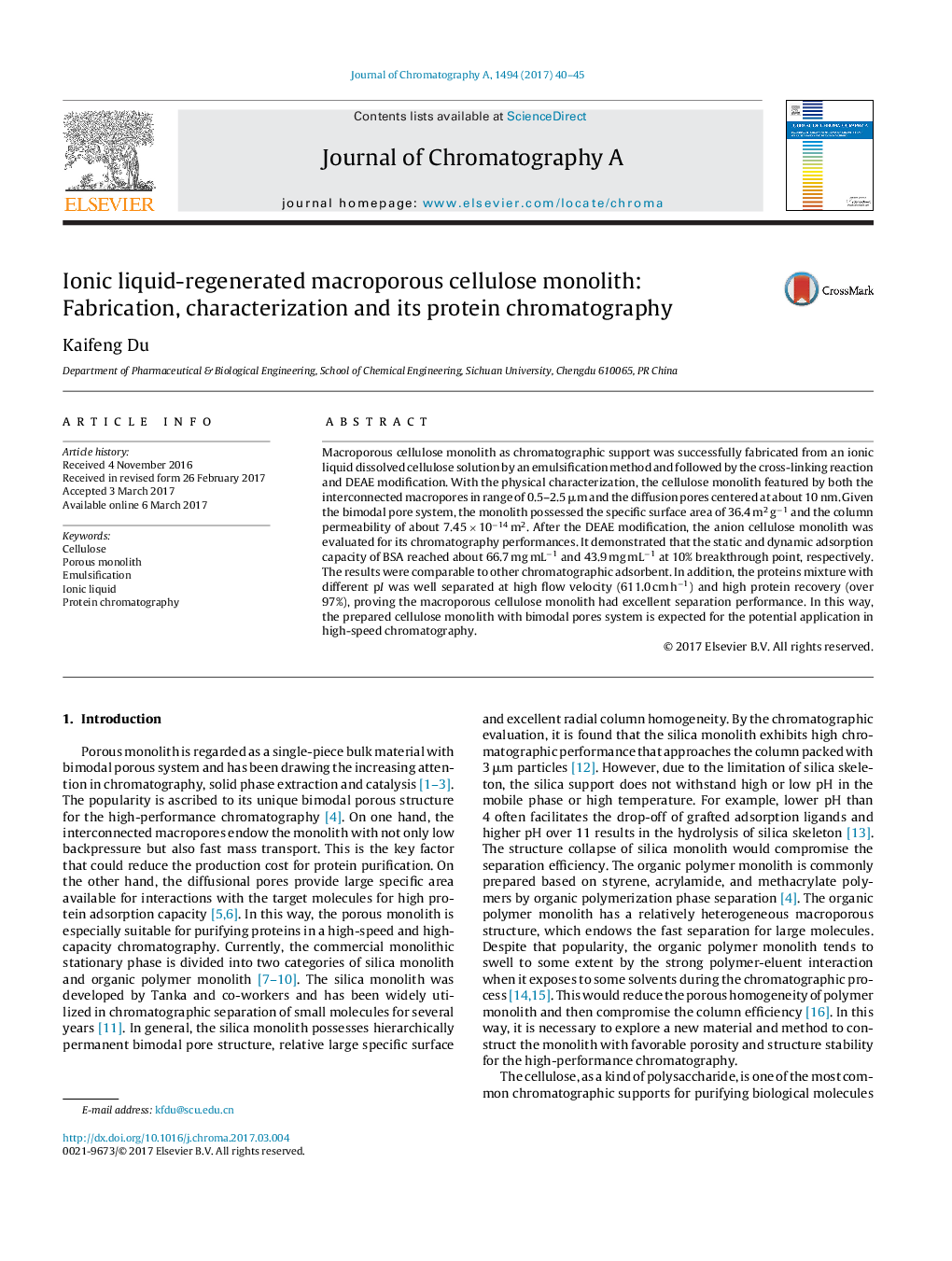| Article ID | Journal | Published Year | Pages | File Type |
|---|---|---|---|---|
| 5135360 | Journal of Chromatography A | 2017 | 6 Pages |
â¢The macroporous cellulose monolith was prepared by the emulsification method.â¢The monolith featured with both macropores and diffusional pores.â¢The macropores endowed the monolith with high permeability for fast separation.â¢Three different proteins were baseline separated on the macroporous cellulose monolith.
Macroporous cellulose monolith as chromatographic support was successfully fabricated from an ionic liquid dissolved cellulose solution by an emulsification method and followed by the cross-linking reaction and DEAE modification. With the physical characterization, the cellulose monolith featured by both the interconnected macropores in range of 0.5-2.5 μm and the diffusion pores centered at about 10 nm. Given the bimodal pore system, the monolith possessed the specific surface area of 36.4 m2 gâ1 and the column permeability of about 7.45 Ã 10â14 m2. After the DEAE modification, the anion cellulose monolith was evaluated for its chromatography performances. It demonstrated that the static and dynamic adsorption capacity of BSA reached about 66.7 mg mLâ1 and 43.9 mg mLâ1 at 10% breakthrough point, respectively. The results were comparable to other chromatographic adsorbent. In addition, the proteins mixture with different pI was well separated at high flow velocity (611.0 cm hâ1) and high protein recovery (over 97%), proving the macroporous cellulose monolith had excellent separation performance. In this way, the prepared cellulose monolith with bimodal pores system is expected for the potential application in high-speed chromatography.
